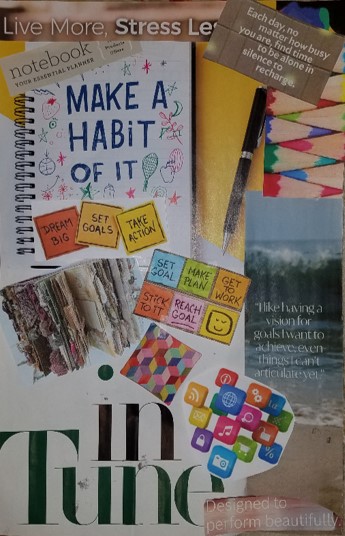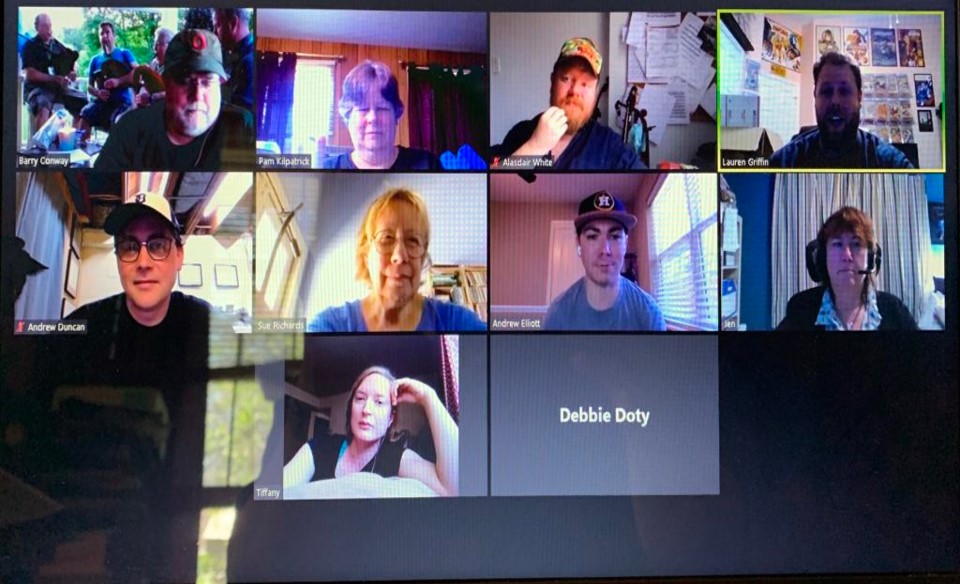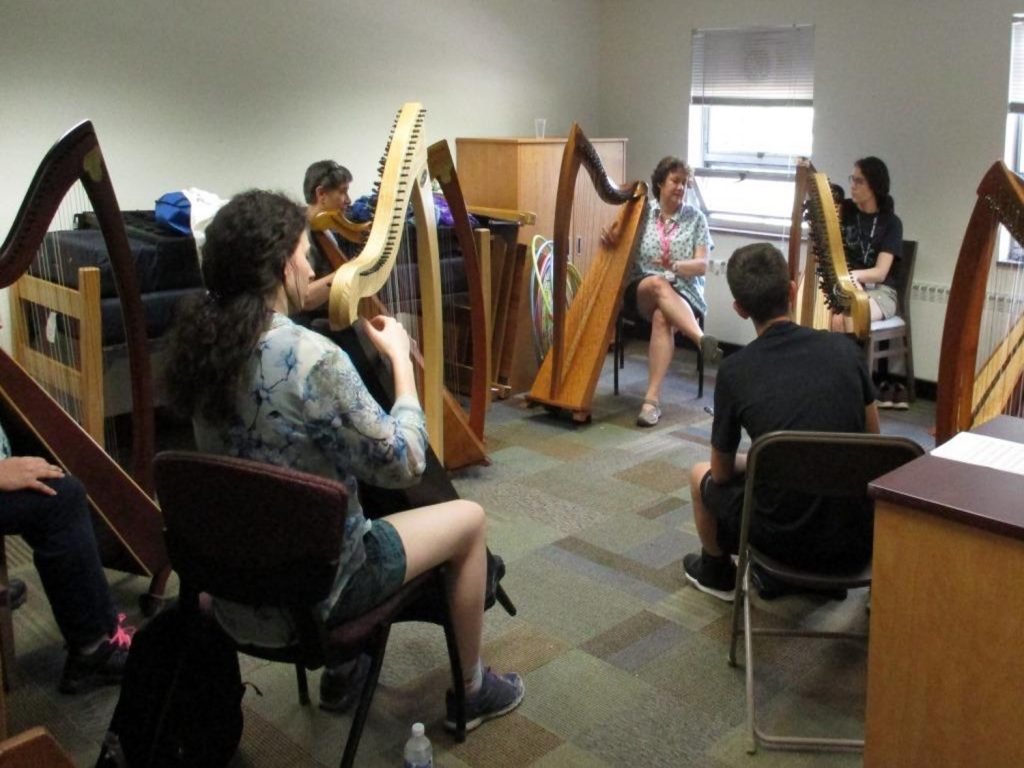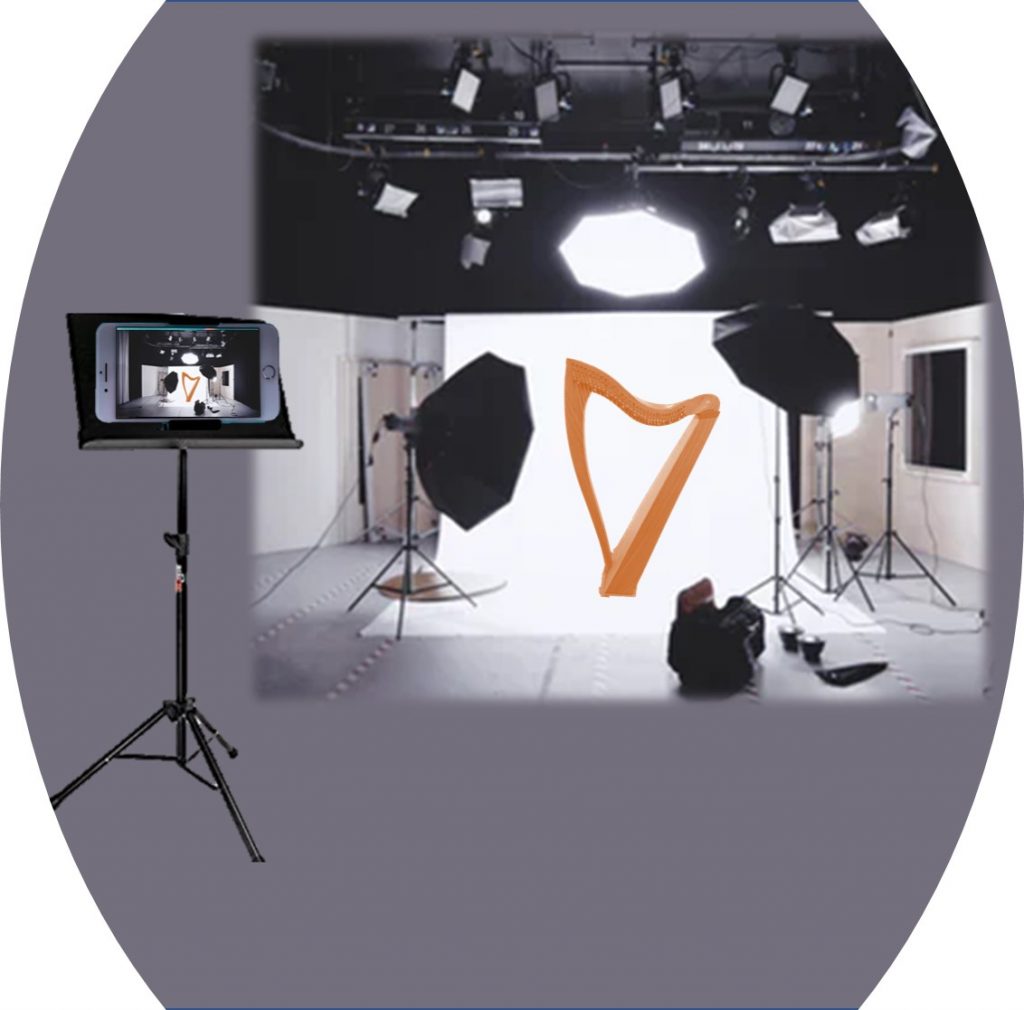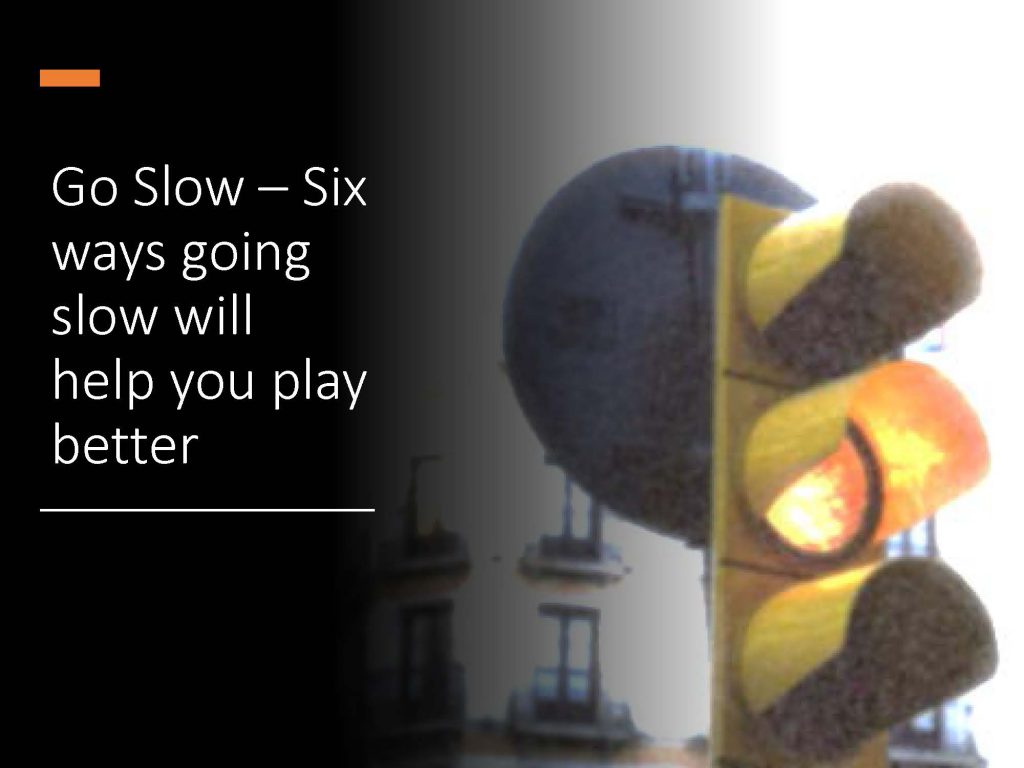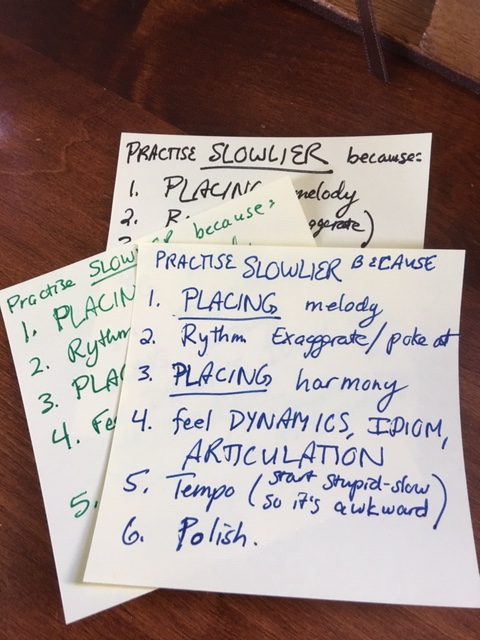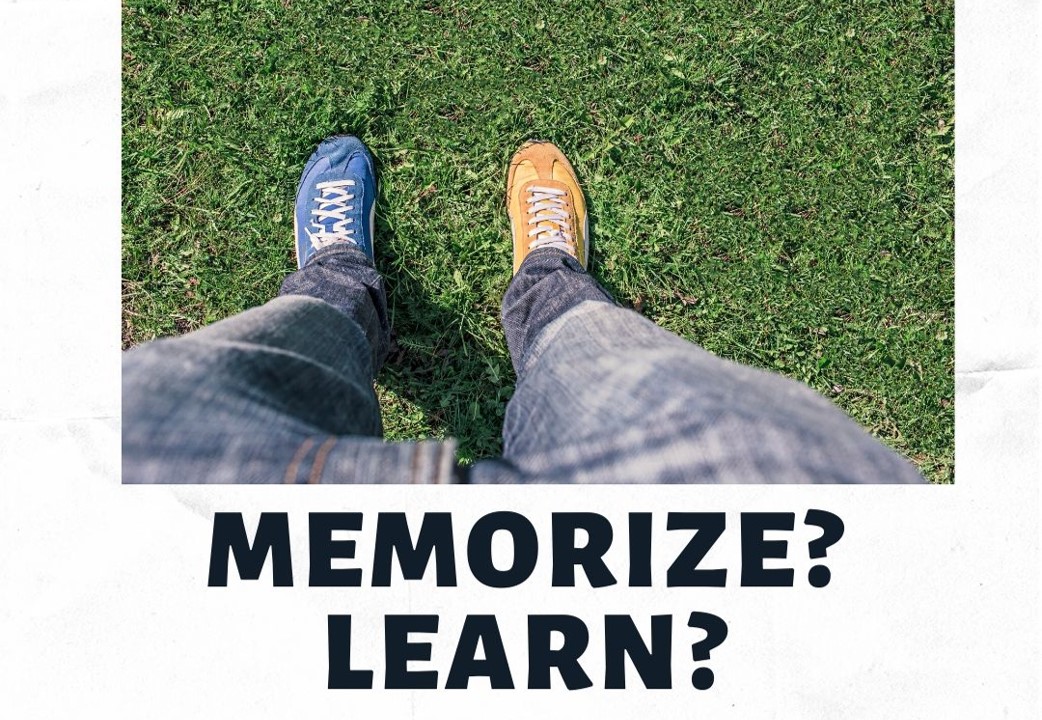It’s already February! But that’s ok, you have goals! You have thought about them, codified them, captured them – possibly in multiple ways. You’re ready to go! Woohoo! Your goals are where you’re going – mental joy ride time! But how are you going to get there?
You may have heard of the various modes of learning. You might even know what your particular strengths are. The question is – do you use these in your practice to help you learn? Before we go on, we need to agree that for our purposes, practicing is actually more about learning than anything else. And possibly even more about learning that your lesson!
In your lesson, you get the gist of what you’re meant to be learning. But even the best students learn relatively little while in the lesson. In the lesson is where you get the basic materials and the guidance needed to build your music. So, no, I’m not saying you don’t need lessons – we all need lessons! There is so much to learn. The lesson is actually not about you playing. Lessons are far more about the guidance you receive from your teacher than about anything else. This is especially true for adult learners. You are guided on how to interact with the music, how to coax sound from the box, how you might think about what you’re doing, and of course, the physical stuff you must do to accomplish your goals. Your teacher is helping you learn how to think and interact with the music so you can do it yourself.
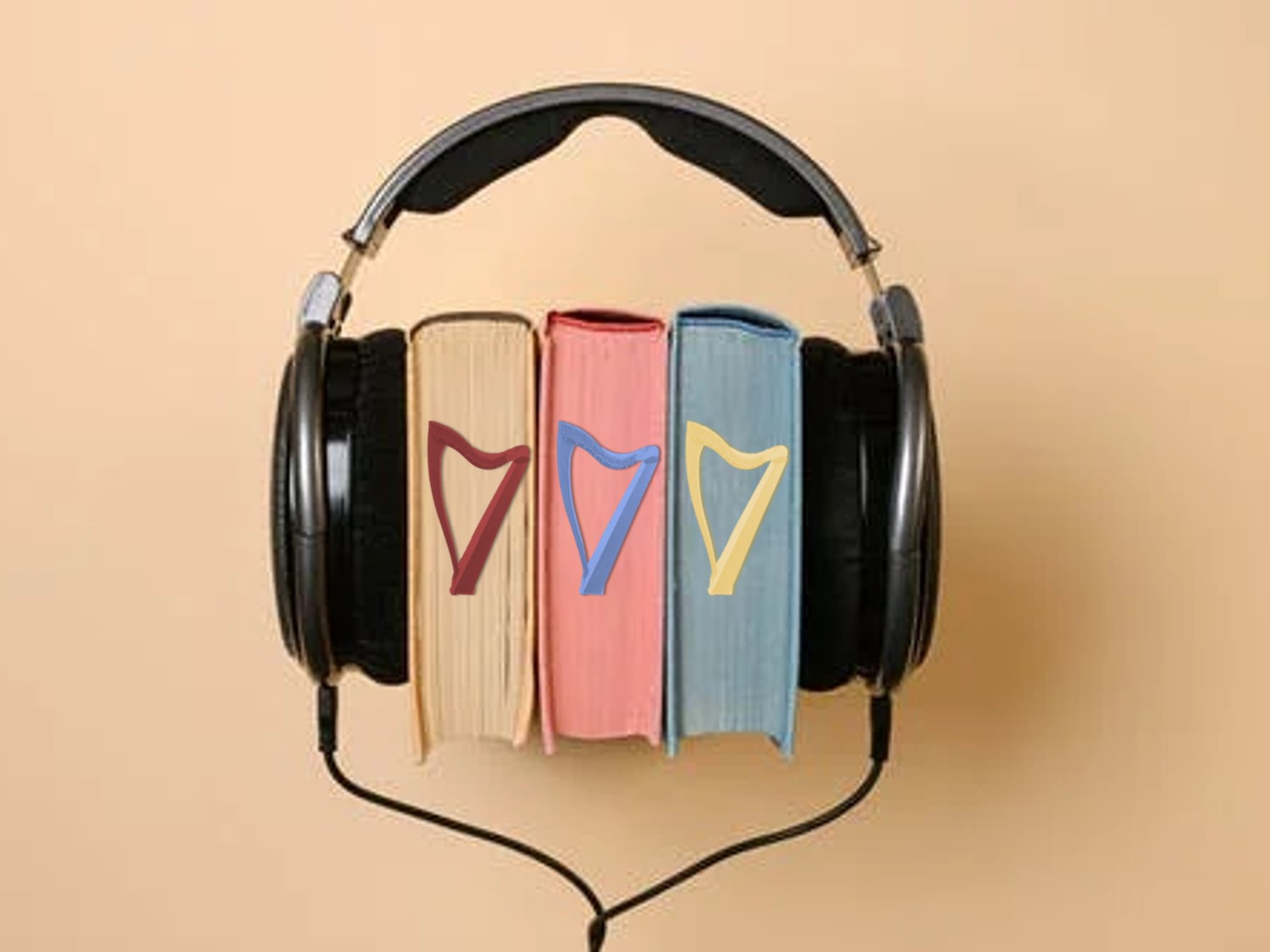 So, of course you are being taught during your lesson. But let’s say you practice one hour each day that you don’t have a lesson. That means of the seven hours each week you spend at your harp, only 15% is spent in direct interaction with the teacher. The other 85% of the time is by yourself, leveraging what you got in your lesson so that you can learn the music. When you realize that, it’s clear that it will be while you’re practicing you need to spend your time wisely. This is when you will learn the most through implementing the information you received in your lesson.
So, of course you are being taught during your lesson. But let’s say you practice one hour each day that you don’t have a lesson. That means of the seven hours each week you spend at your harp, only 15% is spent in direct interaction with the teacher. The other 85% of the time is by yourself, leveraging what you got in your lesson so that you can learn the music. When you realize that, it’s clear that it will be while you’re practicing you need to spend your time wisely. This is when you will learn the most through implementing the information you received in your lesson.
Then the question becomes, how can you best spend that time, so you maximize your learning (while also maintaining your enjoyment)? Because now you really know that pointless, unexamined iteration is a waste of your time. What should you do then?
The first thing you might consider is how you learn best. You’ve learned lots of things over your life in many different ways. You’ve learned to talk, to read, to cook, to drive, to balance your checkbook, to play the harp, and so much more. And while being taught those things you might have noticed that you really prefer to be left alone to read the manual. Or you might instead prefer someone who knows what they’re doing tell you how to do it. Or you might want someone to do it while you watch and then watch you while you try. You might be very disciplined and work carefully through a piece. Or you might analyze and examine the tune before you start working on it. Or you might just pick at bits and pieces until something sticks. You have a preferred mode of learning.
All of those are good approaches – and using your best approach will certainly help you learn while reducing your frustration. You already know that not everyone learns the same ways and you probably intuitively know that when there’s a mismatch, you are likely to become exasperated – or just get in your own way.
So the second thing you might consider is which ways are not for you – and give those a wide berth! Using methods and approaches that you know do not work for you is just pointless (unless your intent is to learn nothing but to bother yourself in the process).
However, this leaves another pool of ways to learn – those that are neither your strengths nor your weaknesses. These all hold some (potential) promise. If you listen really well but read really poorly (that is, you are auditory but not visual), you can read the music while listening to it (yea youtube) thus combining them to give yourself a new way to think about the tune. If you are tactile but all over the place, you might set yourself the challenge of finding the similarities and differences in the fingering patterns throughout the tune. Combining modes of learning can help you learn better. This idea of pairing up two ways of doing it opens up some new ways to get the music into your head!
Next, we’ll talk a little more about some descriptions of ways of learning and how those strengths might apply. Until then, learn your practice. Are you visual? auditory? tactile? Something else (there are loads of ways to talk about how you learn) – let me know how you learn in the comments below…I’m sure between us all we have similarities and differences.
